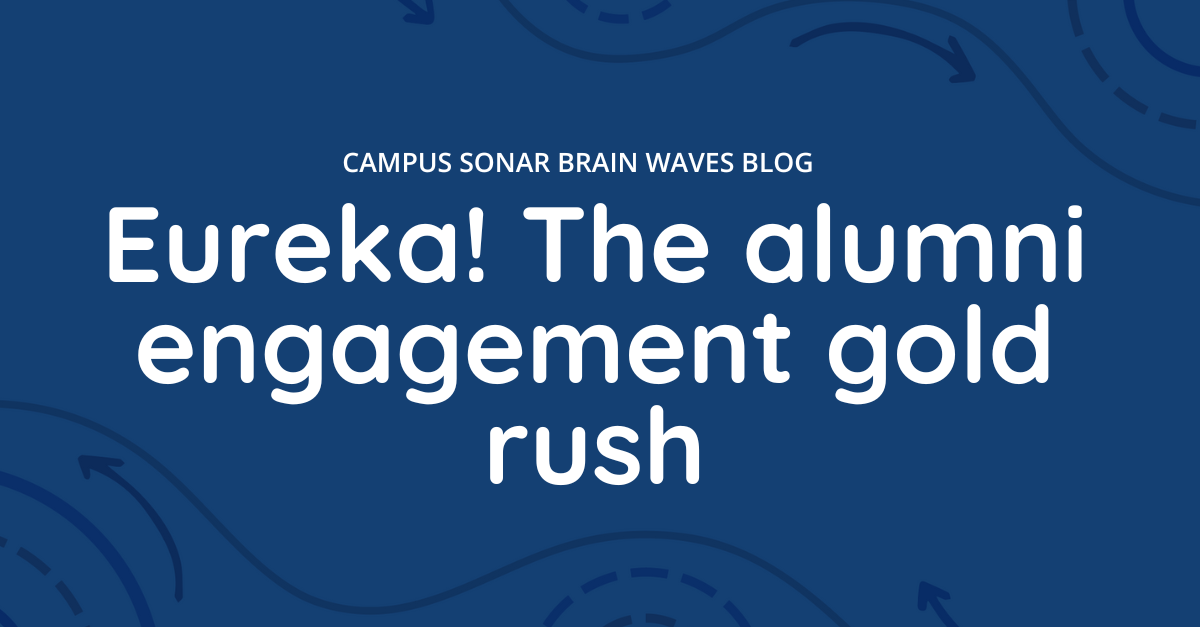Eureka! The Alumni Engagement Data Gold Rush

The data gold rush is on in higher ed advancement, and institutions hope to hit pay dirt by leveraging this data bonanza—whether it’s identifying alumni career journeys to better match mentors to mentees or discovering alumni interests to better target communications and fundraising. But unless advancement offices have a strong strategy backed by defined and talented resources, they’ll be left with little but a server full of fool’s gold.
It’s fantastic that institutions finally understand the power of data that can be mined from digital engagement efforts. This is no small feat—the map to this treasured approach to advancement wasn’t drafted by one lone navigator, but rather a collective of pioneers that included data analytics aficionados, social listening mavens, visionaries from edtech companies, and fearless university leaders and staff.
But while some have seen the light of this bright future, others are still in the mine shaft surrounded by piles of data gold with no path out. This is the potential calamity facing alumni engagement and development. Mining and stockpiling data isn’t enough—the data has to be cashed in to truly have value.
How so? Three requirements must be in place to gain value from the data:
- A clearly defined system and process for capturing and analyzing data.
- A strategy for translating those analytics into narratives that drive future engagement concepts.
- An incredibly talented and adequately resourced team to execute everything—from data extraction to analysis to strategy to engagement.
To complete the first requirement, tremendous coordination is needed.
- Systems must capture the appropriate data and talk fluently with one another.
- Tech staff, providers, and engagement folks must ensure the right information is collected and tracked.
- Providers, tech staff, and other campus departments need to make sure that systems, databases, and analytics services are connected and synced.
Once all of these in are in place, it’s time to think about the strategy, the second requirement.
Creating a strategy requires collaboration and objectivity, as well as research that supports strategic goals. Collaboration across development and alumni relations teams, as well as up and down the org charts to determine the stories told by the data and, conversely, the stories that need to be told to alumni. Your research needs to support strategic goals.There’s collaboration in brainstorming engagement possibilities and objectivity in selecting the best engagement opportunities that yield the best ROI. This approach is more effective than selecting those that fit into convenient ways of doing things or those that can only accommodate existing staff or limited budgets.
The third requirement involves resources, talent, and trust.
- Resources, such as budget and bandwidth, to adequately carry out a sustained engagement strategy.
- Talent from staff who specialize across the engagement spectrum—including video, social media, writing, web, events, and stewardship.
- Trust in the people on the front lines of this engagement, trust in those driving the efforts, and trust in the digital engagement process as a long play.
Without a steady stream of creative, calculated communications, programs, and other engagement opportunities, the carts of data gold will come out of the mine empty. And without that data, there’s nothing to feed the cycle of data gathering, analysis, narration, strategy, and execution.
While the data may be the gold, the true treasure is in establishing a cyclical, evolving, dynamic digital operation around that data—and in the yield of generations of more engaged alumni.
Don't want to miss a single post from Campus Sonar? Subscribe to our monthly Brain Waves newsletter to get the latest and greatest about social listening in higher education delivered right to your inbox.
The post Eureka! The Alumni Engagement Data Gold Rush originally appeared on the Campus Sonar Brain Waves blog.
